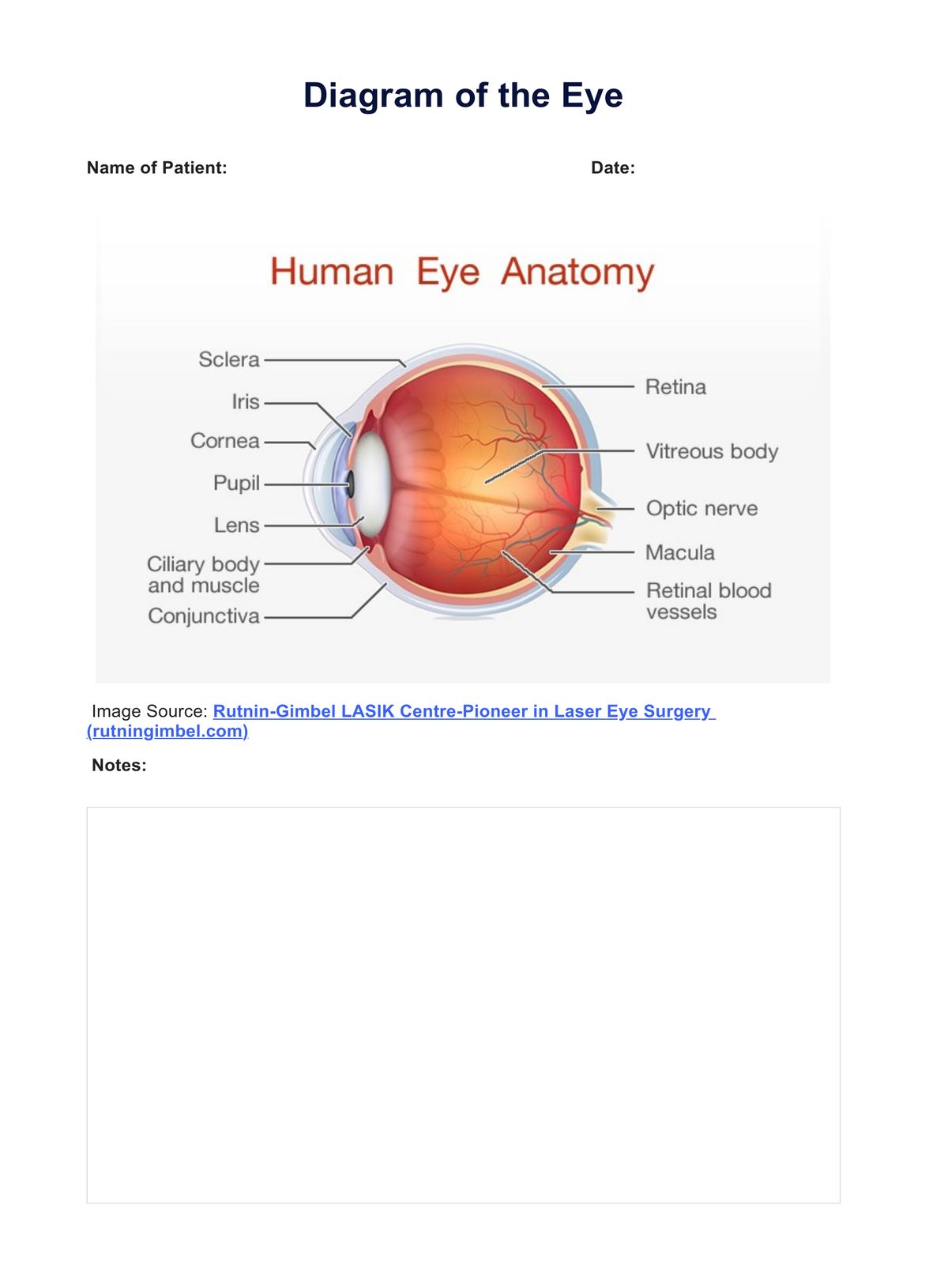The diagram illustrates the intricate structures within the eye, showcasing its role as a vital organ in the human body.

Download the Free Diagram of the Eye PDF highlighting all the visual information on human eye anatomy for clear vision.
The diagram illustrates the intricate structures within the eye, showcasing its role as a vital organ in the human body.
Healthcare professionals, such as optometrists and ophthalmologists, can utilize the diagram to communicate visually with patients about eye conditions. It aids in simplifying complex concepts, facilitating better patient understanding, and fostering a collaborative approach to eye care.
Eye care professionals, educators, and students commonly use this diagram to understand, teach, and learn about the complexities of the eye's anatomy and its functions.
EHR and practice management software
*No credit card required
Free
$0/usd
Unlimited clients
Telehealth
1GB of storage
Client portal text
Automated billing and online payments